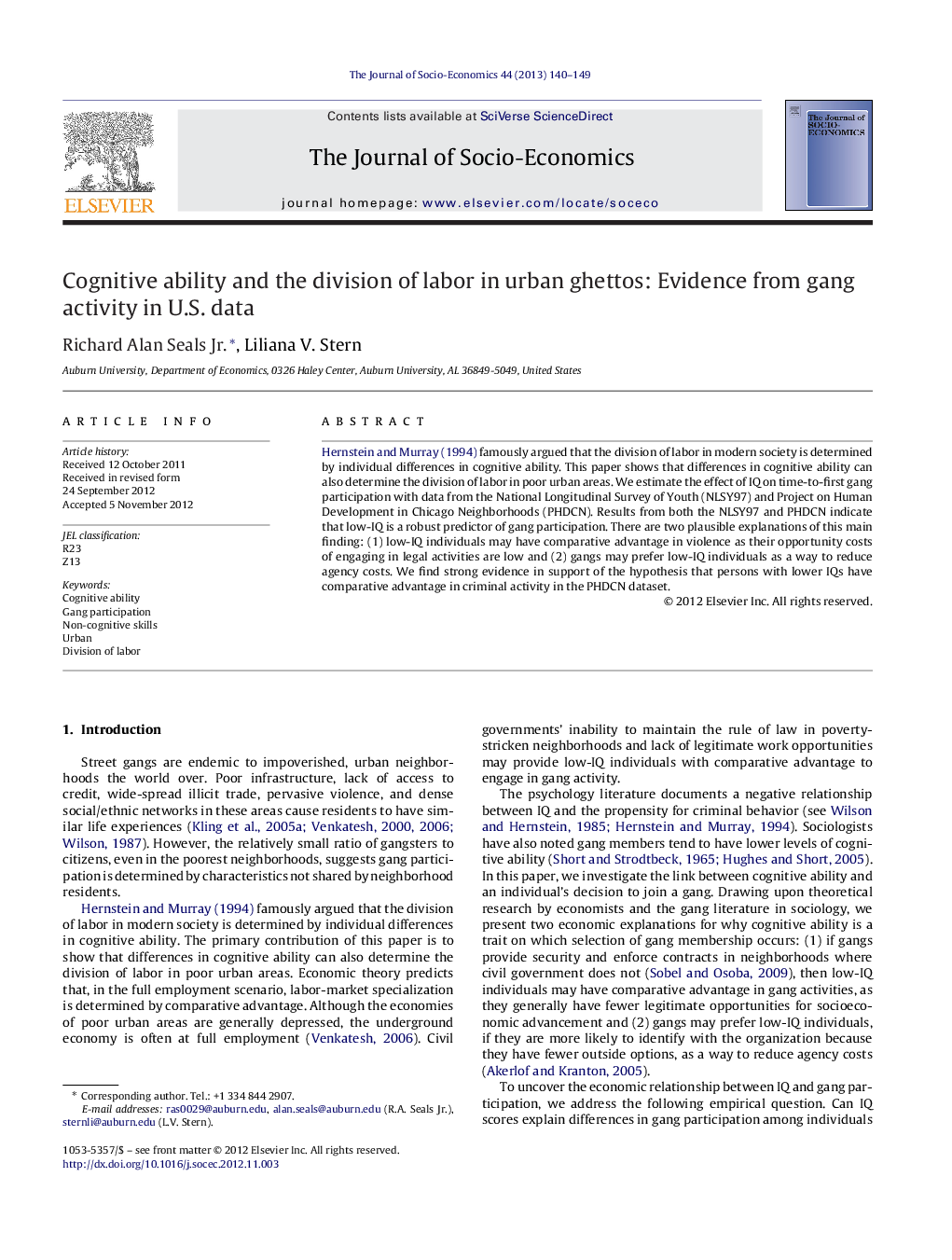| Article ID | Journal | Published Year | Pages | File Type |
|---|---|---|---|---|
| 970654 | The Journal of Socio-Economics | 2013 | 10 Pages |
Hernstein and Murray (1994) famously argued that the division of labor in modern society is determined by individual differences in cognitive ability. This paper shows that differences in cognitive ability can also determine the division of labor in poor urban areas. We estimate the effect of IQ on time-to-first gang participation with data from the National Longitudinal Survey of Youth (NLSY97) and Project on Human Development in Chicago Neighborhoods (PHDCN). Results from both the NLSY97 and PHDCN indicate that low-IQ is a robust predictor of gang participation. There are two plausible explanations of this main finding: (1) low-IQ individuals may have comparative advantage in violence as their opportunity costs of engaging in legal activities are low and (2) gangs may prefer low-IQ individuals as a way to reduce agency costs. We find strong evidence in support of the hypothesis that persons with lower IQs have comparative advantage in criminal activity in the PHDCN dataset.
► This paper shows that cognitive ability can determine the division of labor in poor urban areas. ► We estimate the effect of IQ on time-to-first gang participation with data from U.S. data. ► Results indicate low-IQ is a robust predictor of gang participation. ► A person's relative IQ, with respect to one's neighborhood peers, determines gang participation.
